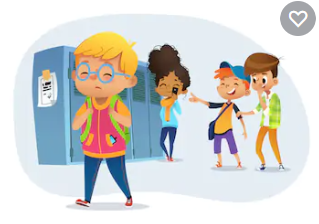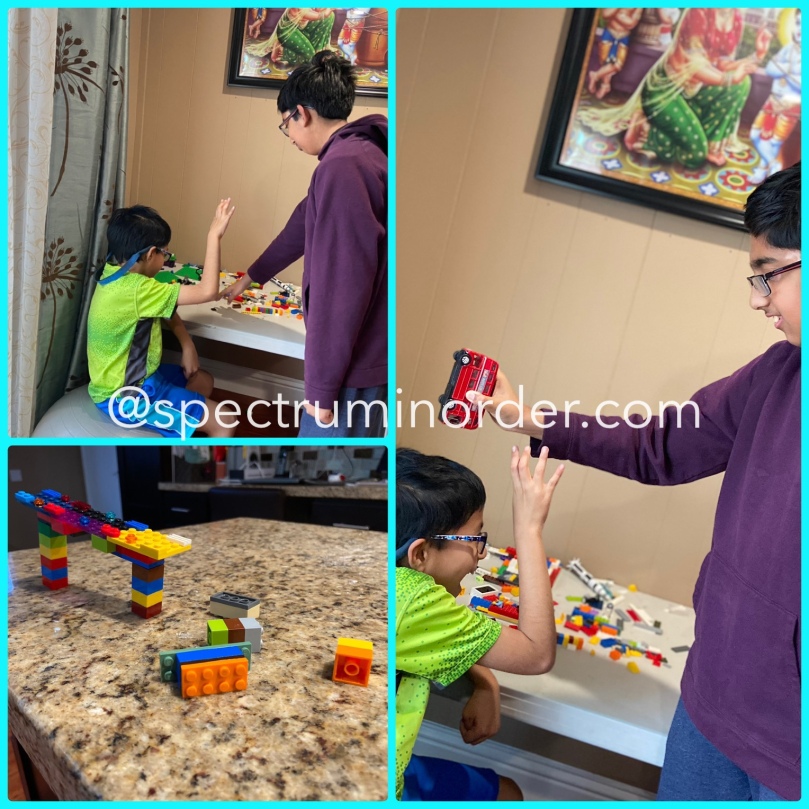From a very young age, we learn several fundamental life skills, and among them is to protect ourselves and stand for ourselves.
Unfortunately, this particular skill doesn’t emerge naturally to the child with Autism. We have to teach them how to self-defense themselves. The earlier we start, the earlier they are ready to face bullying.
How to teach an autistic child to face bullying: Implement 3 simple, everyday techniques to build this Life skill.
Give a man a fish, and you feed him for a day. Teach a man to fish, and you teach him for a Lifetime.
Proverb
Featuring – Krish – My older son, Girish – My younger son with autism
It’s been one year and a half since that shocking incident, yet it is so fresh in my memory like it happened just yesterday. It was the fall season, after school hours, when I went to pick up Girish, my younger son with Autism. His class aid/para conveyed and apologized that a classmate of Girish bit him in his left shoulder. Shocking right?
I had the same feeling mixed with anger that where was the aid or the class teacher during that time? How could they leave the kids alone? and so on.
Fortunately, he had a jacket, and underneath that two layers of clothing, hence the wound was not that deep. While we were discussing the incident at home, Krish looked at Girish and asked him, what were you doing when he was biting you? Why didn’t you stop him? Girish just looked at him and laughed. He didn’t get a clue what his brother asked.
The reason is Girish can’t recall events, a skill we are teaching him.

Yet, it shook my ground. It made me anxious and kept me awake for a few nights pondering as well. I was planning to complain to the principal and contact the district superintendent. Although my worry was this might happen anytime. My son doesn’t have one on one aid, and therefore I can’t expect that he will have a shadow every time.
Moment of truth
The following year during spring break, when the boys were at home, my younger son (Girish) was non-stop whining because his elder brother (Krish) annoyed him or broke his Legos or took away the paper he was drawing, etc.

I generally don’t question my older son (Krish) as to why he is taking advantage of his younger brother (Girish) because he is compassionate towards his brother. Still, occasionally he also wants to have fun. But one day, it was getting too much, Krish broke the Lego bridge that was built by Girish, and he gave a shrill cry.
I jumped and ran to check Girish that’s when Krish said, “Mom, that’s how the school is, his school mates will be MEAN, he can’t just stand and cry, he has to talk back or at least push me.” Who else would know better about Mean classmates who bully than a 13 yr old middle schooler?

What he said that day was like a punch on my face, and it hit me so hard that I instantly made up my mind to do something about it. I realize that kids with autism have the inability to understand social cues, but there might be an alternative?
I quickly mailed Girish’s ABA team and requested a parent meeting. After a brief discussion about this problem, we all came up with a plan to implement at home.
We executed our plan for numerous months consistently, and I have seen significant progress in Girish. How do I say this? Two reasons –
- At the beginning of this year, his teacher said, a boy came to snatch his book, and Girish responded loudly, “Stop it”.
- When his brother annoys him, he says with some whining, “Don’t be mean to me.”
I know, what you are thinking, there’s so much more to bullying, and this is just the tip of the iceberg. You are right, but start small and make those steps into more enormous leaps.
I want to encourage you to implement 3 simple, everyday techniques to build this Life skill of understanding Bulliness.
Tweet
Plan 1 – Encourage your kid to say, “No.”
Teach your kid to say, “No, I don’t like this” to something. Start simple, when you give her/him choice of two dresses or food items, chances are he/she picks a preferred one. When he/she has mastered that skill, encourage your kid to say, “No, I don’t want this” or “No, I don’t like this” to a non-preferred option.

Another example can be, when your kid prefers a particular video or a TV show, ask him/her an option of a non-preferred show and encourage to say, “No, I don’t like that show.”
The purpose here is to introduce the word “NO.” If you do not like something, use your words to say, “NO.”
Plan 2 – Involve family members and therapists
Bring the family members on board and get on the mission to pretend play to be MEAN to your kid. It can be a sibling or even yourself. We can implement this plan in two ways; pretend play and modeling.
Pretend Play – Caution : Apply this therapy no more than once or twice a day in the early stages.
Krish, my older son, is ever happy to be MEAN with his younger one. He would run away with his toy, his favorite is breaking the legos Girish builts, or just annoying him.

In the early stages of this venture, Girish would whine and come to me, and I used to remind him to use a loud voice and prompt him to use words like, “NO, don’t do that,” “You are Mean,” “Don’t do that, I will tell Ms. M” (his teacher and he adores her).
What if your kid doesn’t have a sibling, then do not hesitate to pretend play yourself. Remember, our purpose is to make your kid understand that if he/she doesn’t like somebody taking his/her items or annoy him/her, then use words and raise the voice.
For eg., when you play bubbles with her, pop the bubble that your kid wants to pop, if she doesn’t like, and cries encourage her to say, NO, I want to do it. There are numerous possibilities; don’t miss any chance.
Girish had an excellent therapist and was very passionate about her work. She is not in our team anymore, and I miss her. She also did pretend play during therapy sessions to be mean with Girish and cheered Girish to use his words.
Modeling – This is a powerful strategy too. Do this when your kid is around you. You can model with your partner or with your friend. Have a mock conversation, and pretend that you do not like something your friend/partner said, and then firmly, you can say, “I do not like what you said.”
Plan 3 – Social stories and Videos
Social stories are my favorite to introduce any topic to Girish. So far, it has worked on a positive note. The only condition here is to read often. Read to your child the above social story from Autismspeaks.org. You may also create your own personalized social story for your child.
Since all kids like videos, show them videos that demonstrate kids defending themselves. Try this video. Your child might like it.
Conclusion
I took this question to a Facebook group that is run by adults who grew up having autism. These were some of their responses;
- Mr. A said that as a kid, it was a trouble to identify who is laughing with him or at him? and who are friends and bullies?.
- Mr. B suggested teaching the kids to identify toxic behavior.
- Mr. C advises first, and foremost, an identification that they are being bullied is crucial.
- Mr. D pointed out that he was awful at identifying that he was bullied and that it felt uncomfortable.
I have just scratched the surface. I know it’s going to take me years to make Girish comprehend, but I am just glad that I started taking baby steps today.
When are you going to begin teaching this critical Life skill to your child? Let me know in the comments below, share if you have any tips with you.
Apply these simple plans today –
Implement 3 simple, everyday techniques to build this Life skill of understanding Bulliness –
Plan 1 – Encourage your kid to say, “No.”
Plan 2 – Involve family members and therapists.
Plan 3 – Social stories and Videos.
Like what you read!
Subscribe to Spectruminorder.com to get blog posts packed with strategies, and positivity to uplift yourself to handle the challenges of Autism journey delivered right to your inbox every week.
Follow me on Twitter, Facebook, and Pinterest.

Mam thanks a lot to remind us that it is very important life skill which we all must give to our kids
LikeLike
Dr. Trupti, I am so glad that you found the article useful.
LikeLike
Loved what you wrote Priya. This is so important part of life skill to teach.
LikeLike
Thanks, Vijayalakshmi. You are so right about it, not only important but also a critical and complicated one for any child with autism to follow. The best we can do is introduce them to the tools to face the challenge.
LikeLike